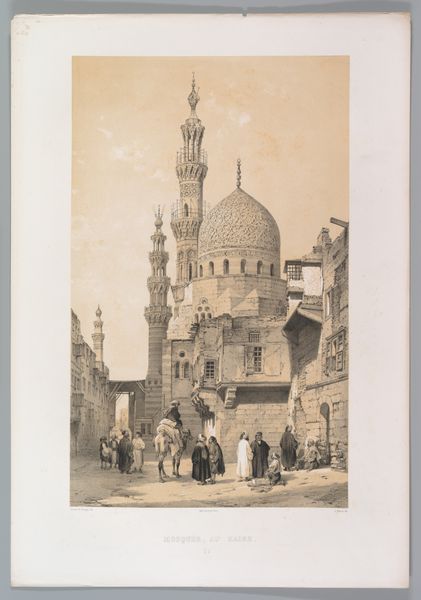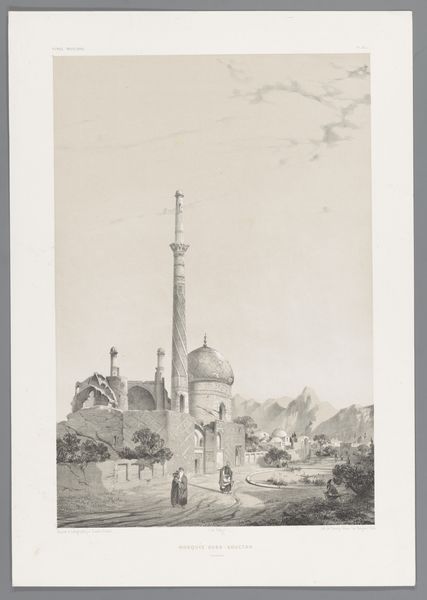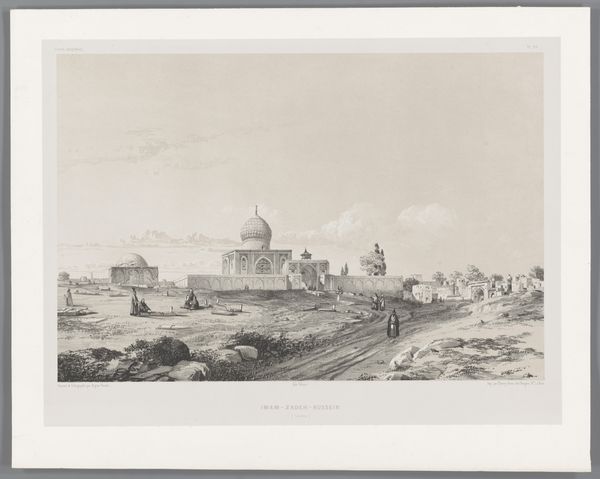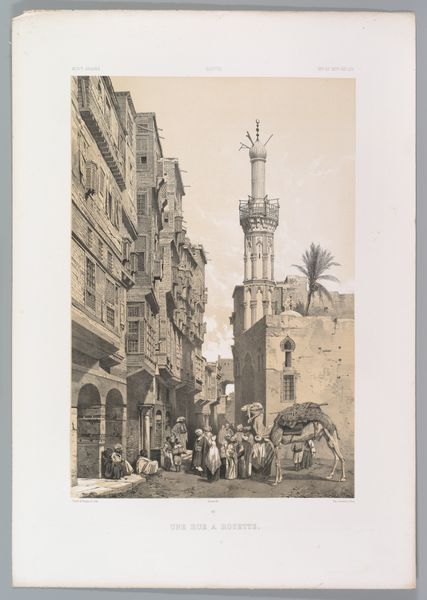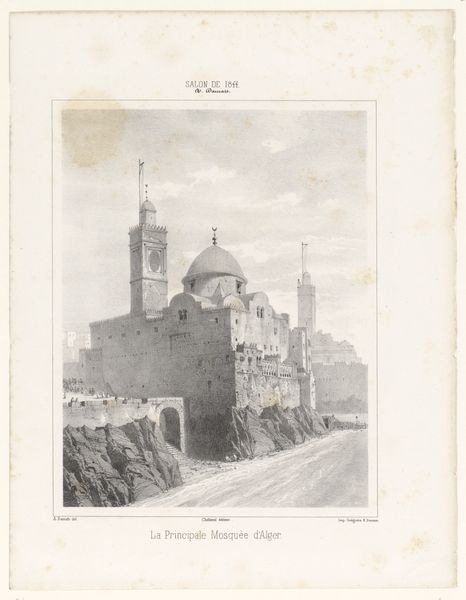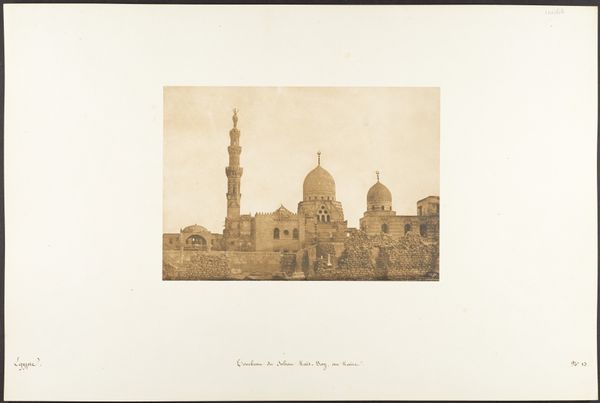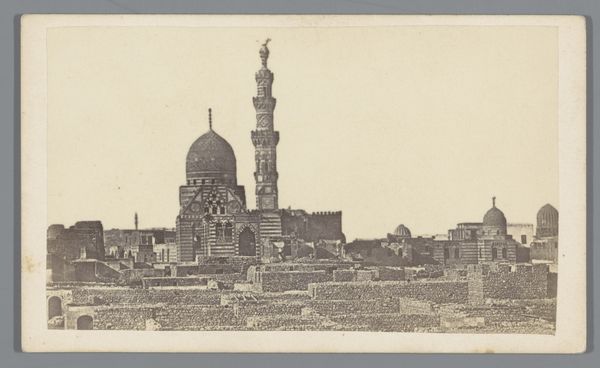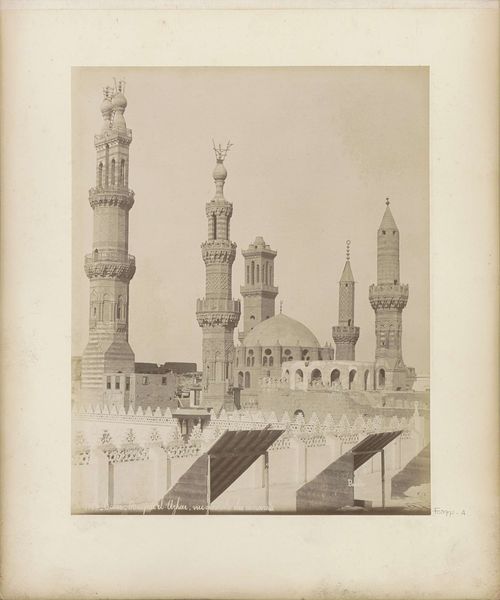
80. Mosquée et Tombeau d’el Ghoûry, au Kaire 1843
0:00
0:00
drawing, print, photography, watercolor
#
drawing
#
water colours
# print
#
landscape
#
photography
#
watercolor
#
coloured pencil
#
cityscape
#
islamic-art
Dimensions: Sheet: 22 3/8 × 15 5/8 in. (56.9 × 39.7 cm)
Copyright: Public Domain
Curator: Let’s turn our attention to "Mosquée et Tombeau d’el Ghoûry, au Kaire," or, the Mosque and Tomb of al-Ghuri, in Cairo, by Joseph-Philibert Girault de Prangey, created in 1843. Editor: My first impression is one of contrasting stability and decay. The monumental architecture looms, but there's a palpable sense of ruin and wear surrounding it. The colour palette also adds to a sense of nostalgia and ancient history. Curator: Indeed. This work is fascinating in its use of watercolor and colored pencil. Note how the artist has meticulously captured the architectural details. Think about the labor involved in rendering such intricate patterns. And the print process used for wider circulation democratised art appreciation in new ways during the mid-19th century. Editor: From an iconographic perspective, we see the minaret and dome as dominant symbols of Islamic faith. These structures reach towards the sky, signifying a connection to the divine, and the contrast with the ruins around hints at a cyclical view of time, where even powerful empires and faiths experience periods of decline and renewal. What do you make of the figures nestled in the ruins at the foot of the mosque? Curator: Their presence emphasizes the relationship between monumental structures and the everyday lives of people. These people might represent labourers or other residents; this offers insights into social classes, potentially dependent on that particular space for employment and shelter, but without idealising. Editor: I also think their positioning draws attention to human resilience. They find a space to rest and converse amidst the fragments of a lost era, suggesting how cultural memory and even hope can persist even during hardship. There is something really eternal in their symbolism in this context. Curator: Well, considering how the drawing may have been consumed in Europe, its value as a commodity representing colonial ambitions also must be considered in balance. Editor: Absolutely, thinking of the global circuits of image-making and art production brings a fuller understanding. This has definitely given me something new to ponder about its symbolic reach. Curator: And for me, too, about its materiality within a complex historical and socio-economic landscape.
Comments
No comments
Be the first to comment and join the conversation on the ultimate creative platform.
